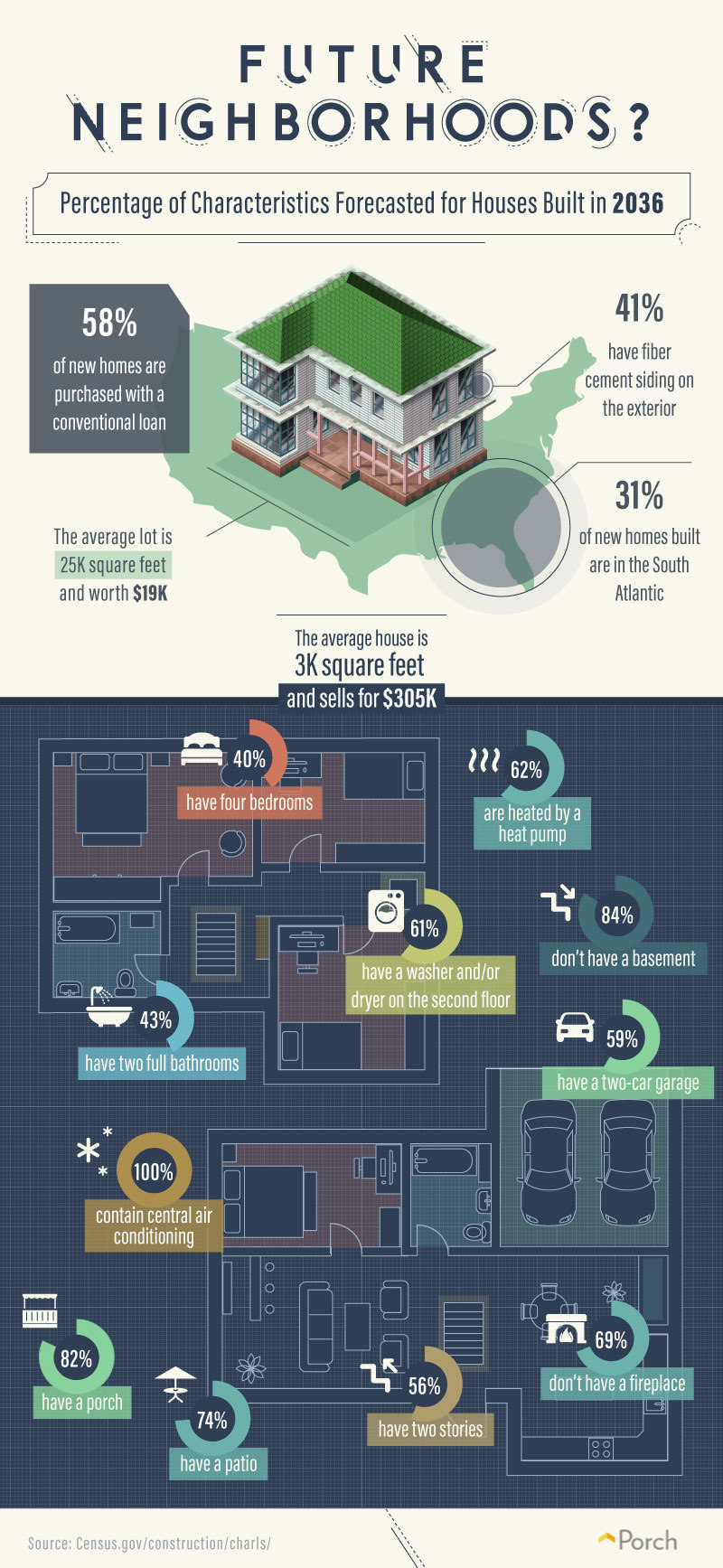By 2036, the average American family will own a 13.3 percent bigger house and a 19 percent smaller yard, with a $305,000 single-family home spanning 3,000 square feet, a new study finds.
The eight- and 18-year projections by Porch, a home improvement website, stand in contrast to the average American family in 2016, for whom a 2,600-square-foot home, priced at $198,000, had been the norm nationwide. In that year, 68 percent of all homes were purchased through a conventional loan while the average property lot spanned about 31,000 square feet.
In the next two decades, however, most homes will escalate in size even as lot sizes shrink. In 2026, the average home will clock in at 2,700 square feet and cost $252,000 while growing to approximately 3,000 square feet at a cost of $305,000 in 2036, according to Porch.

Photo Courtesy of Porch
“As the number of new home-builds continues to grow, the cost, size and construction could change significantly over the next 20 years,” according to the new study. “By 2036, the extra 400 square feet of new homes could cost buyers more than $100,000 over their average 2016 prices.”
In 2016, the average lot was 31,000 square feet, costing $19,000, according to the study. In 2026, the average lot will shrink to 28,000 square feet (a decrease of 9.7 percent) even as the cost stays steady $19,000. In 2036, the average lot will clock in at 25,000 square feet (a decrease of 19.7 percent) at the same cost of $19,000, the study said.
 How to find the hidden potholes on the road to agent productivity
A simple step-by-step to help you save time and money READ MORE
How to find the hidden potholes on the road to agent productivity
A simple step-by-step to help you save time and money READ MORE
Out of homes constructed in the past decade, 72 percent don’t have a basement while 55 percent had at least two stories. By 2036, more homes will boast large garages (28.1 percent will include three-car garages in 2036, compared to just 16.5 percent in 1999). The number of homes with four or more bathrooms will also rise (from 3.7 percent in 1999 to 17.4 percent in 2036).
Increasingly, homebuyers are beginning to look for new ways to finance property. Indeed, 86 percent of homes in 2006 were purchased through conventional financing in 2006 compared to just 57 percent projected to use conventional financing methods in 2036. As millennials age and begin to purchase property, more will opt for government-issued loans, according to the study.
“With lower overall down payments and easier approval ratings, FHA home loans provide access to more lenders with different criteria, making owning a home more accessible for millions of potential buyers,” the authors of the report write.
Source: click here
















